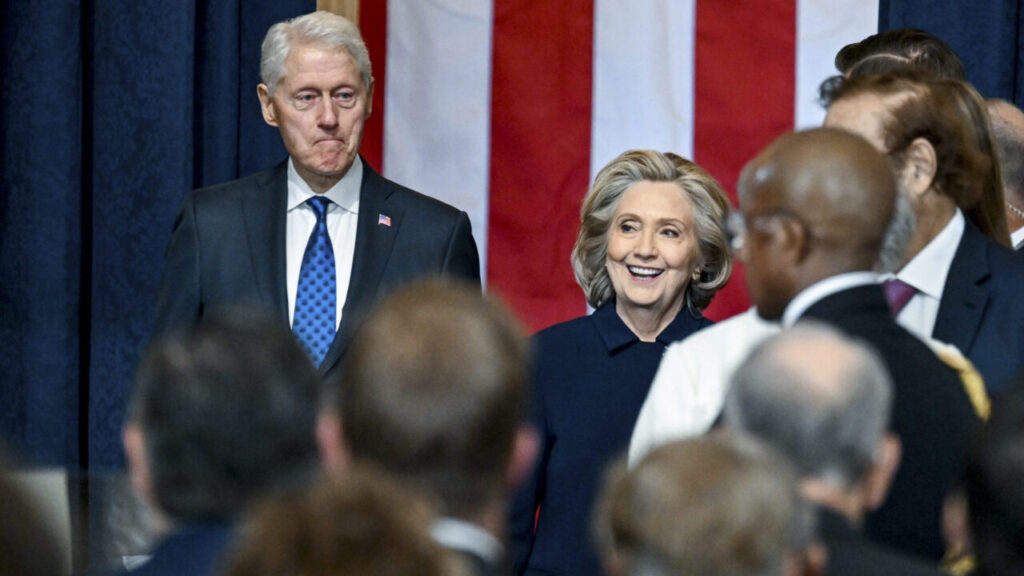Share
|
Getting your Trinity Audio player ready...
|
As Gov. Gavin Newsom and legislators contend with a deficit-plagued state budget, they face increasingly strident demands from providers of two very important public services for billions of new dollars to prevent financial collapse.
The pleas are coming from hospitals and public transit systems which, their leaders say, have never recovered from the financial ravages of COVD-19.
While hospitals strained to care for hundreds of thousands of COVID-19 patients – and then saw visits plummet below pre-pandemic levels – transit ridership plunged to record-low levels and has recovered only partially as many Californians continue to work from home rather than commute.

Dan Walters
CalMatters
Opinion
Last week, the California Hospital Association released a study indicating that a fifth of California’s hospitals are in danger of closing, in part because reimbursements from Medicare, the federal medical care program for the elderly, and Medi-Cal, the federal-state system of care for the poor, fail to cover costs of services.
The report said that in 2022, California hospital care costs ballooned by $23.4 billion over pre-pandemic levels, leading to losses of $8.5 billion, on top of $12 billion in pandemic-related losses.
“The real cost of this crisis – if help does not arrive soon – will be borne by the people of California, whose health care services will erode, slowly in some areas, and all at once in others,” Carmela Coyle, the hospital association’s president, said in a statement.
A hospital in Madera County closed after Attorney General Rob Bonta blocked its sale to a larger health care organization, and several other rural hospitals are reported to be on the brink of closure.
The hospitals’ chief demand is that the state increase payments for services to Medi-Cal enrollees. The system now covers a third of the state’s nearly 40 million residents, but reimbursement rates have been virtually frozen for years.
Hospital managers are traipsing a trail to the Capitol already blazed by transit system executives who say their services are teetering on the edge of a “fiscal cliff” that needs big injections of cash to avoid.
Service Reductions Start Vicious Cycle
They cite data from UCLA’s Institute of Transportation Studies that monthly transit ridership statewide declined from 100 million in February 2019 to about 20 million in June 2020 as the pandemic raged and since has rebounded to scarcely half of the pre-pandemic level.
Transit officials say that if they reduce service to cut costs, it becomes a vicious cycle because less frequent or slower service would also make Californians even less likely to use transit, while increasing fares would hurt low-income workers who rely on transit to get to their jobs.
Transit system problems don’t necessarily begin and end with ridership and revenue, however. Some have locked themselves into unaffordable labor contracts and many Californians are afraid to use transit due to fears of becoming crime victims.
Bay Area Rapid Transit, the state’s largest commuter rail system, has been particularly prone to managerial shortcomings. Last month, BART’s inspector general, Harriet Richardson, resigned, saying interference from the system’s managers made doing her job impossible.
“At some point, you just say enough is enough,” she told reporters. “I do hope that laying the ground that I have laid, BART will look at the office a bit differently than they have in the past.”
In February, Richardson released a report claiming that there had been fraud and conflicts of interest.
Give the scopes of their operations and their impact on the lives of millions of Californians, Newsom and legislators can scarcely afford to ignore pleas from hospitals and transit systems. However, their size means relief could cost the state tens of billions of dollars it doesn’t have.
It’s an exquisitely vexing dilemma.
About the Author
Dan Walters has been a journalist for nearly 60 years, spending all but a few of those years working for California newspapers. He began his professional career in 1960, at age 16, at the Humboldt Times. For more columns by Walters, go to calmatters.org/commentary.
Make Your Voice Heard
GV Wire encourages vigorous debate from people and organizations on local, state, and national issues. Submit your op-ed to rreed@gvwire.com for consideration.
RELATED TOPICS:
Categories


















